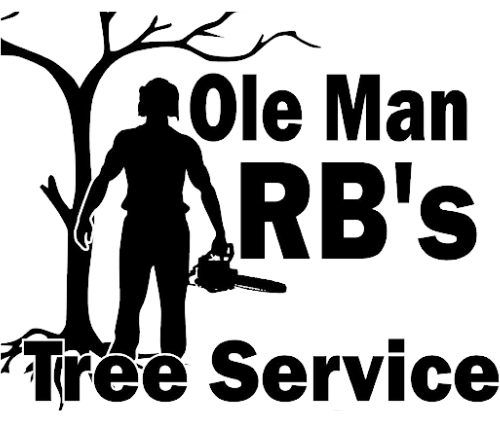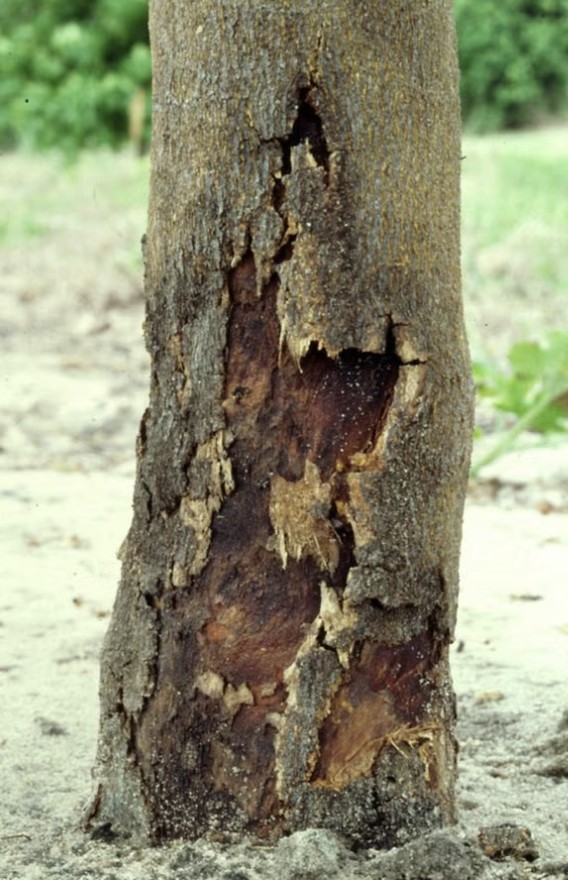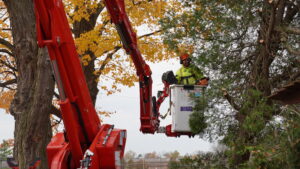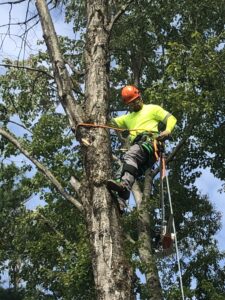August’s warm, humid conditions make fungus thrive—here’s how to catch it early.
When it comes to tree health in Michigan, August can be a make-or-break month. The combination of warm days, cool nights, and high humidity creates the perfect environment for fungal infections to take hold. While some fungi are harmless or even beneficial, others can quickly weaken or kill a tree if left untreated.
At Ole Man RB’s Tree Service, we’ve seen firsthand how fast a minor fungal problem can escalate into a major safety hazard. The good news? If you know what to look for, you can catch these infections early and save your tree before it’s too late.
In this guide, we’ll cover:
- Why fungal infections spike in late summer
- The most common fungal diseases in Michigan trees
- Early warning signs to watch for
- What to do if you suspect an infection
- How to prevent fungus in the first place
Why Fungal Infections Are Common in August
Tree fungi thrive in moist, warm environments and Michigan summers deliver exactly that. Afternoon storms and morning dew keep leaves, bark, and soil damp, while fluctuating temperatures create stress that makes trees more vulnerable.
The risk is especially high if:
- Your trees have wounds from pruning, storm damage, or lawn equipment
- They are in shaded areas where moisture lingers
- They’re planted in poorly draining soil
- You’ve had a wet summer followed by warm, humid days
Think of fungi like opportunists: they’re always present in the environment, but they need the right conditions and a stressed or injured tree to make their move.
Common Fungal Diseases in Michigan Trees
While there are dozens of fungal pathogens, a few are especially common in our region:
- Anthracnose – Causes dark, sunken lesions on leaves, often along the veins. Common in maple, ash, and oak trees.
- Apple Scab – Affects crabapples and apple trees, leaving olive-brown spots that can cause leaves to drop early.
- Powdery Mildew – Looks like someone dusted the leaves with white powder. Often seen in late summer on maples, oaks, and lilacs.
- Armillaria Root Rot – Attacks roots, leading to slow decline, dieback, and in severe cases, death.
- Oak Wilt – A deadly disease that blocks water movement in the tree. Leaves turn brown starting from the edges inward.
Knowing which fungi are common in your area can help you spot them before they spread.
Early Warning Signs of Fungal Infection
Catching fungal diseases early is the key to saving your tree. Here’s what to watch for:
1. Discolored or Spotted Leaves
Brown, black, or rust-colored spots especially with irregular shapes — can indicate fungal activity. If multiple leaves show symptoms and it’s not just from insect damage, it’s time to take a closer look.
2. Wilting or Curling Leaves
Fungi that attack the vascular system can prevent water from reaching the leaves, causing them to wilt, curl, or dry up even when the soil is moist.
3. Early Leaf Drop
If leaves are falling in August or early September, well before autumn colors set in fungus may be the culprit.
4. White, Black, or Gray Coating on Leaves or Bark
Powdery mildew looks like flour dust; black sooty mold leaves a grimy coating; other fungi can appear as fuzzy or crusty patches.
5. Cankers on Branches or Trunk
These are sunken, dead areas on the bark. They may ooze sap or have discolored, cracked edges.
6. Mushrooms at the Base of the Tree
While not always harmful, mushrooms growing around the base or root zone can indicate root rot, a serious, often fatal condition.
What to Do If You Suspect a Fungal Infection
If you think your tree has a fungal disease, don’t wait. Fungi spread quickly and can move from one tree to another through wind, rain, insects, or root contact.
- Call a Certified Arborist – Professional diagnosis is critical. Misidentifying a disease can lead to wasted time and ineffective treatments.
- Prune Affected Branches – Removing infected limbs can slow or stop the spread, but proper pruning techniques are essential to avoid further damage.
- Dispose of Debris Properly – Never compost infected leaves or branches, spores can survive and reinfect. Bag and dispose of them instead.
- Apply Fungicides When Appropriate – Some fungal infections respond well to treatments, but timing matters. Your arborist can recommend the right product and schedule.
Preventing Fungal Problems in the First Place
While you can’t completely eliminate the risk, you can significantly reduce it:
- Plant Disease-Resistant Varieties – Especially for species prone to fungus like crabapple or oak.
- Water at the Base – Avoid wetting the leaves when watering; damp foliage encourages fungus.
- Prune for Airflow – Thinning the canopy helps sunlight and air dry the leaves faster after rain.
- Avoid Wounding the Tree – Be careful with lawn equipment and during pruning.
- Keep Soil Healthy – Healthy soil supports strong roots, which help trees resist infection.
Don’t Wait Until It’s Too Late
A fungal infection caught early can often be managed or even reversed. But once the disease has spread extensively, the damage is usually irreversible and in some cases, the safest option is complete removal to protect nearby trees.
At Ole Man RB’s Tree Service, we specialize in diagnosing and treating fungal infections before they become disasters. Whether it’s a minor leaf spot or a serious root rot, our team has the expertise, equipment, and treatments to help keep your trees healthy year-round.
If you’ve noticed spots, wilting leaves, or mushrooms near your tree, call us today for an inspection. Acting now could save you thousands in removal costs and preserve the beauty of your landscape for years to come.




Nice bad brilliant funny random awesome interesting helpful.
çok yararlı bir paylaşım olmuş teşekkür ederim çok işime yarıcak.
çok teşekkürler
bu konuda bu kadar net bilgiler internette malesef yok bu yüzden çok iyi ve başarılı olmuş teşekkürler.
çok teşekkürler